Advancing Athletic Care with GNRB & Dyneelax Sports Medicine Technology
Explore how GNRB and Dyneelax arthrometers are transforming sports medicine technology with their innovative approach to diagnosing and managing ACL injuries. These advanced tools provide unmatched precision, revolutionizing injury assessment and treatment strategies in orthopedics, radiology, and physiotherapy, essential for effective athletic rehabilitation.
Introduction
Welcome to the Frontier of Athletic Healthcare
Sports medicine is a dynamic field of healthcare dedicated to enhancing athletic performance, preventing sports-related injuries, and facilitating effective rehabilitation. At the core of sports medicine lies a commitment to understanding the unique demands of athletic activities on the human body, especially the intricate mechanisms of the musculoskeletal system.
The Vital Role of Sports Medicine
The realm of sports medicine is not confined to elite athletes; it serves all individuals who seek to maintain an active lifestyle. It bridges various specialties, incorporating expertise from orthopedic surgeons, physiotherapists, sports psychologists, and other health professionals, all unified by a common goal: to ensure the safe and rapid return to activity for patients.
Precision in Diagnosis: A Cornerstone of Effective Treatment
Accurate and timely diagnosis is paramount in sports medicine. The difference between a prompt return to the field and prolonged rehabilitation often hinges on the precision of the initial assessment. Injuries such as partial tears of the anterior cruciate ligament (ACL) can be particularly challenging. They demand diagnostic tools that offer clarity and reliability beyond what conventional imaging techniques can provide.
Enter the World of Advanced Diagnostics
In the pursuit of diagnostic excellence, the sports medicine community continually seeks technologies that push the boundaries of accuracy and efficiency. The GNRB and Dyneelax knee laxity arthrometers represent such advancements. These innovative devices provide objective, quantifiable measures of knee laxity, allowing practitioners to diagnose partial ACL ruptures with greater confidence than ever before.
Empowering Through Innovation
Our mission extends beyond the provision of cutting-edge equipment. We aim to empower sports medicine departments with the knowledge and tools necessary to confront the complexities of ACL injuries. With the GNRB and Dyneelax arthrometers, practitioners can expect a level of sensitivity in diagnosis that sets a new standard in sports medicine.
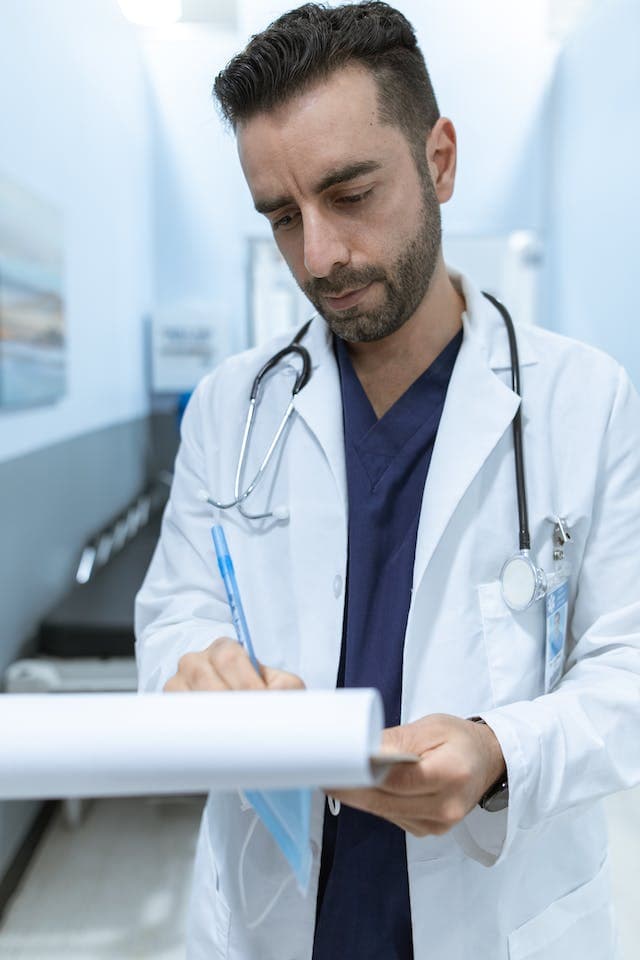
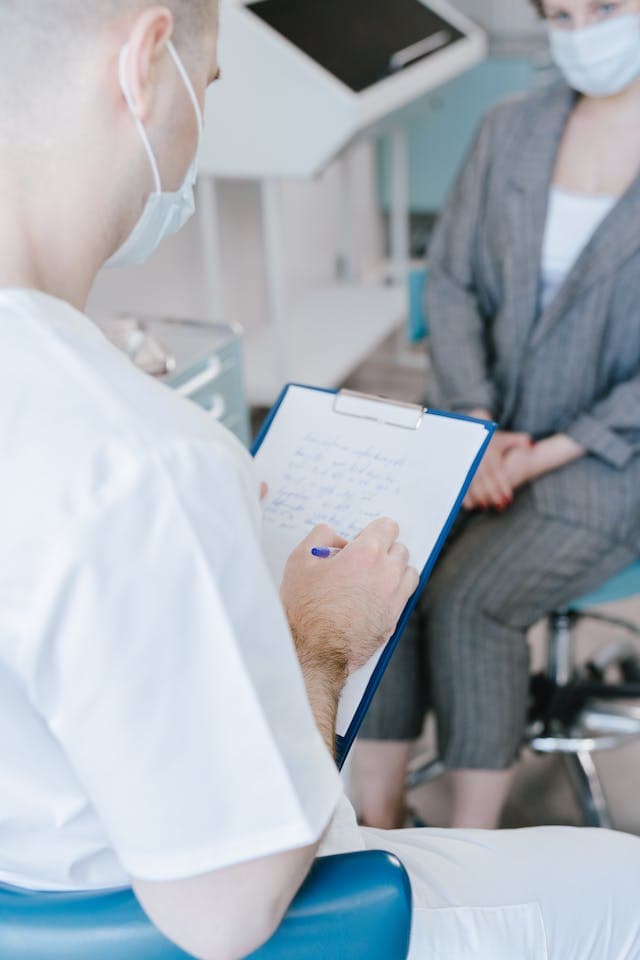


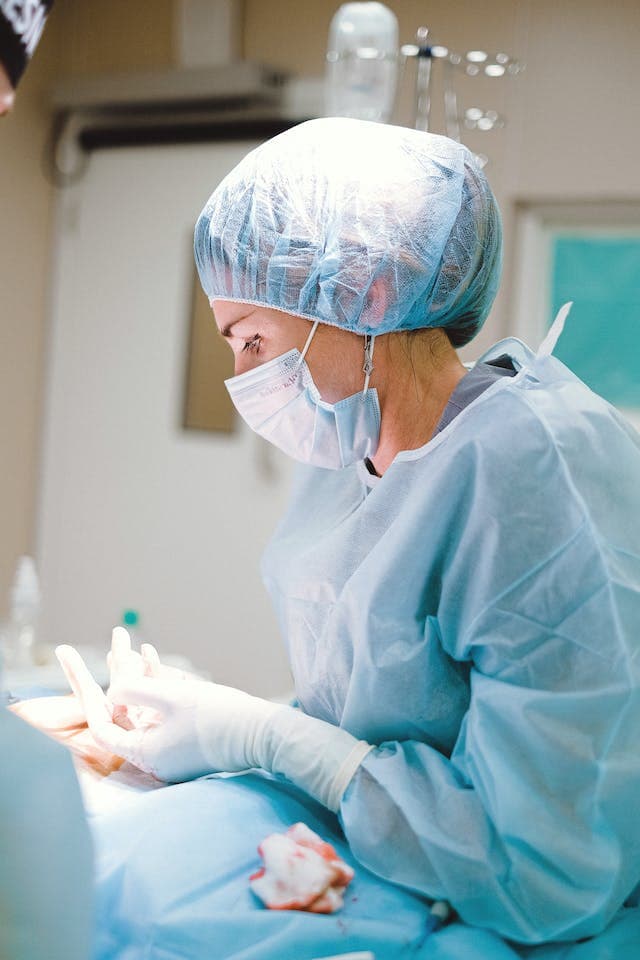
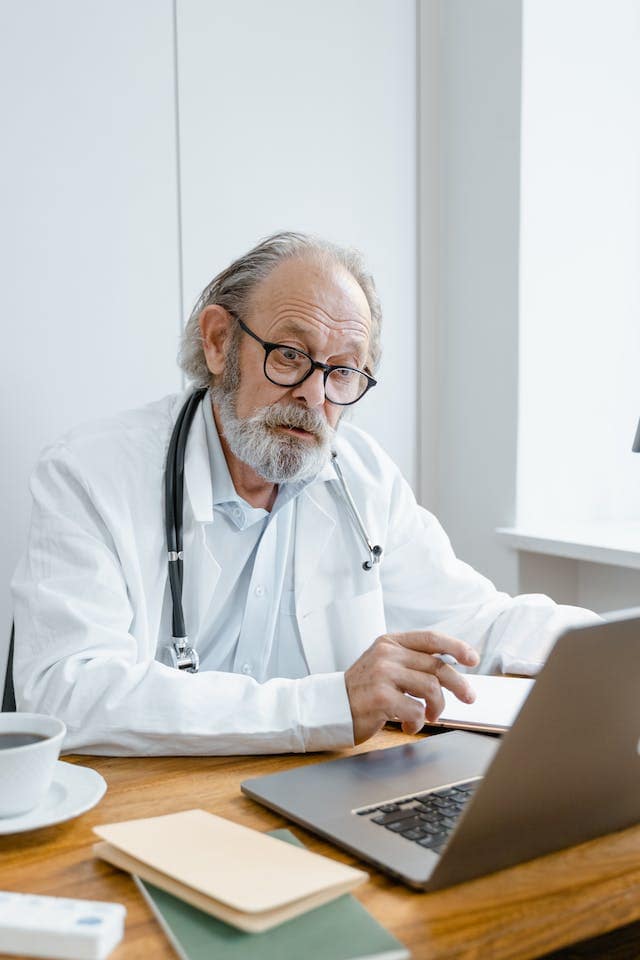
Overview of the GNRB and Dyneelax Sports Medicine Technology
Innovative Approach to Knee Stability Testing
The GNRB and Dyneelax arthrometers are at the forefront of orthopedic diagnostic tools, specifically designed to assess the stability of the knee joint. These devices have revolutionized the way medical professionals approach the examination of the anterior cruciate ligament (ACL), providing precise and reproducible measurements of knee laxity.
Enhanced Diagnostic Confidence
Both arthrometers have been validated through clinical research to have a higher sensitivity in detecting partial ACL ruptures compared to MRI, making them indispensable in sports medicine and orthopedic departments. The ability to measure knee laxity quantitatively means a more accurate diagnosis, individualized treatment planning, and potentially a quicker, safer return to activity for the patient.
A Commitment to Excellence in Patient Care
By incorporating the GNRB and Dyneelax into their practice, healthcare providers are not only adopting the latest in medical technology but also demonstrating a commitment to the highest standard of patient care. These arthrometers are not just tools; they represent a step forward in the pursuit of clinical excellence and optimized patient outcomes in the field of knee injuries.
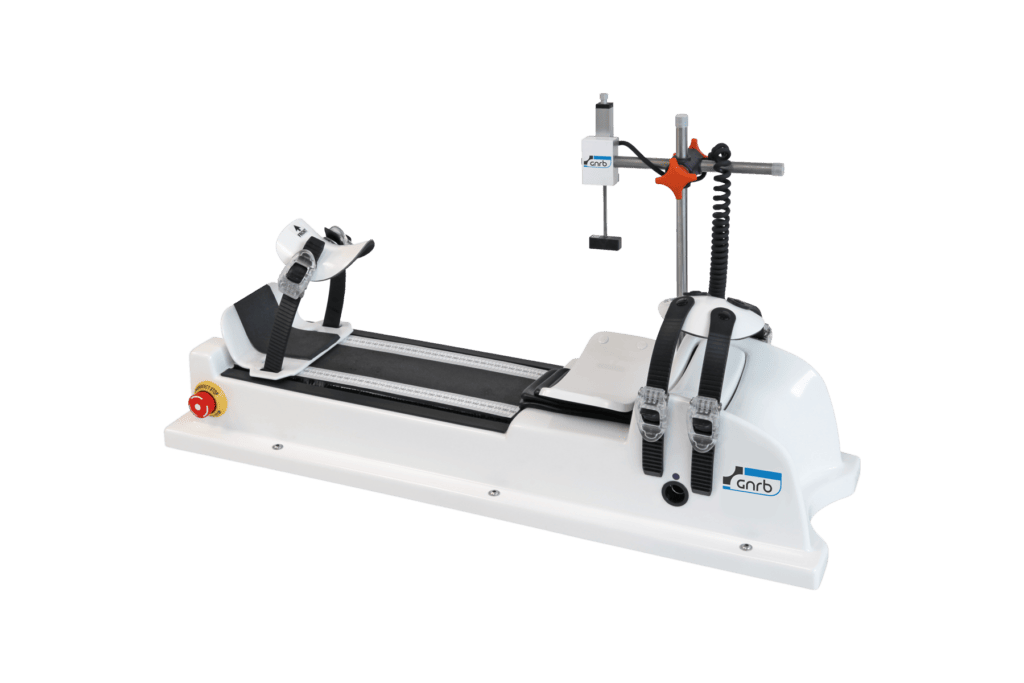
GNRB
Precision and Reliability
The GNRB arthrometer utilizes an automated system to apply consistent anterior force to the tibia, measuring the resulting tibial translation. This quantification helps in assessing the ACL’s condition. The GNRB’s reproducibility and ease of use make it a reliable choice for practitioners looking for a quick and accurate assessment tool in the diagnosis and management of ACL injuries.
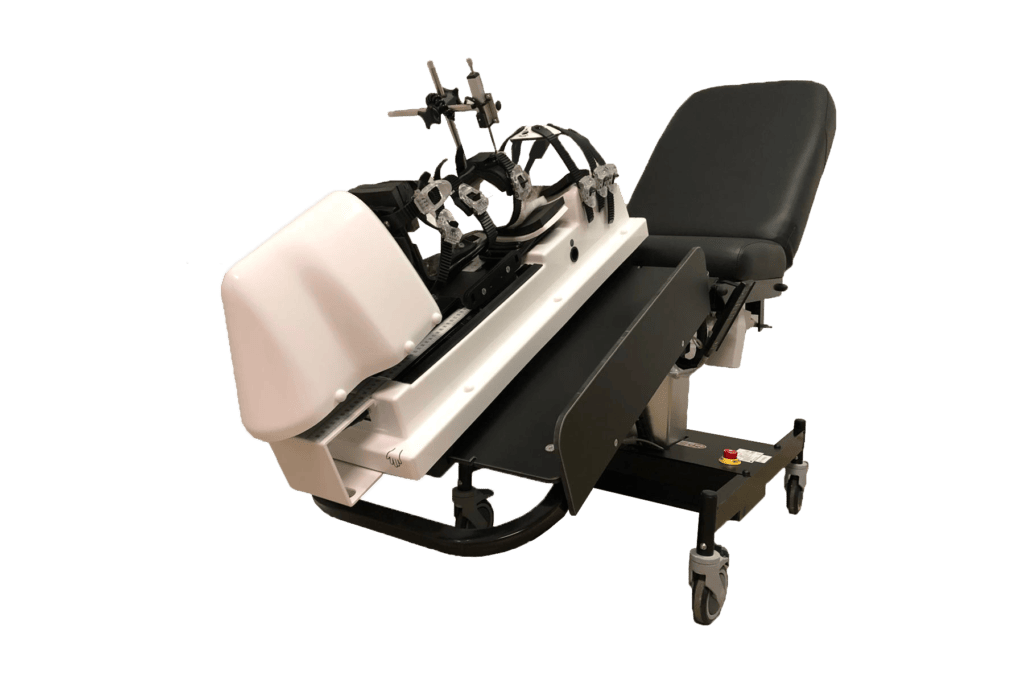
Dyneelax
Dynamic and User-friendly
Matching the GNRB’s commitment to precision, the Dyneelax arthrometer elevates diagnostic capabilities further by implementing both translational and rotational forces. This dual-mechanism approach allows for a more nuanced assessment of the knee’s stability, particularly enhancing the detection of complex instabilities and subtle nuances in partial ACL injuries.
Comparison with Traditional Diagnostic Methods
Enhanced Sensitivity Over MRI
Traditional diagnostic methods for ACL injuries, particularly magnetic resonance imaging (MRI), have been the standard for non-invasive knee assessments. While MRIs provide detailed images of the knee’s structures, they may not always detect subtle abnormalities or quantify the degree of laxity present in partial ACL tears. The GNRB and Dyneelax arthrometers fill this diagnostic gap with their ability to measure knee laxity with exact numerical values, offering a more nuanced understanding of knee stability.
Objective Measurements Versus Manual Tests
Clinical examinations, including manual tests such as the Lachman test or the pivot-shift test, are highly dependent on the clinician’s experience and can be subjective. These tests may vary in sensitivity and specificity. In contrast, the GNRB provides an automated, reproducible force application, and the Dyneelax further refines this by applying both translational and rotational forces, which lead to more consistent and objective outcomes.
Immediate Results for Faster Decision-Making
Unlike MRI, which requires scheduling, image acquisition, and interpretation by a radiologist, the GNRB and Dyneelax arthrometers offer immediate results. This immediacy can be critical in acute settings or when fast decision-making is required, such as in sports events or in the evaluation of athletic injuries during practice or games.
Cost-Effectiveness and Accessibility
MRIs are expensive and not always readily available, which can delay diagnosis and treatment. The GNRB and Dyneelax, once acquired, can be used repeatedly without the per-use costs associated with MRI. Their accessibility and quick turnaround can improve patient throughput in clinical settings, making them cost-effective options for both healthcare providers and patients.
Complementing MRI with Functional Assessment
While the GNRB and Dyneelax do not replace the comprehensive visualization that MRI offers, they provide a functional assessment that complements MRI findings. By integrating these arthrometers into the diagnostic process, clinicians gain a fuller picture of knee health, combining the structural insights of MRI with the functional data from the arthrometers.
Integration in Sports Medicine Programs
Holistic Approach to Athlete Care
Sports medicine programs are designed to support athletes through prevention, diagnosis, treatment, and rehabilitation of injuries. Integrating the GNRB and Dyneelax arthrometers into these programs enhances the standard of care by providing accurate measurements of knee laxity, crucial for athletes' joint health.
Preventive Screenings and Baseline Assessments
The use of GNRB and Dyneelax can be pivotal in pre-participation physical evaluations, offering baseline laxity profiles for athletes. This data becomes invaluable when evaluating the severity of any future injuries, allowing for a comparison to pre-injury levels of knee stability.
Injury Diagnosis and Treatment Planning
When injuries occur, the precise data from these arthrometers assist in diagnosing the extent of ACL damage. This information is essential in creating targeted treatment plans, whether surgical intervention is needed or if a conservative rehabilitation approach is indicated.
Rehabilitation and Return-to-Play Decisions
During the rehabilitation process, periodic assessments with the GNRB and Dyneelax can monitor healing progress and guide the progression of therapy. As the athlete recovers, these tools help in making informed return-to-play decisions, ensuring that the knee is capable of withstanding the demands of the athlete's specific sport.
Research and Outcome Tracking
The objective data from these devices support sports medicine research, providing reliable measurements that can be used in studies evaluating treatment methods, recovery protocols, and long-term outcomes of ACL injuries.
Educational Tool for Athletes and Staff
Incorporating the GNRB and Dyneelax into sports medicine programs also serves an educational function. They help in demonstrating to athletes the importance of knee health, and they can be used to train medical staff, enhancing their understanding of knee mechanics and injury patterns.
Collaborative Care Integration
These arthrometers facilitate a collaborative approach among the multidisciplinary teams involved in sports medicine. Orthopedists, physiotherapists, athletic trainers, and other healthcare providers can share objective data, improving communication and the overall quality of athlete care.
Interested in exploring a rehabilitation program utilizing knee motorized arthrometers?

DOI: 10.24966/ORP-2052/100035

DOI: 10.1016/j.knee.2023.03.017

DOI: 10.1016/j.medntd.2023.100254
Don’t just take our word for it
Testimonials
To all users and those interested in the GNRB devices designed and patented by the Genourob Company.
Over the last 4 years, we have been intensively working the new method of Automatic Dynamic Laximetry, LDA, with its device the GNRB.
In addition to providing a state analysis of the state of the Anterior Cruciate Ligament (ACL) GNRB Gives a functional analysis as well.
So With the GNRB it’s possible to have a Dynamic Analysis of the stiffness of the ACL pre-surgery and of the graft post-surgery. It is useful in post-op follow-up for the graft Ligamentization assessment, and therefore a good indicator of the stability of the Knee.
The device is effective, reliable and easy to use and assists to improve diagnosis and treatment of the ACL injuries.
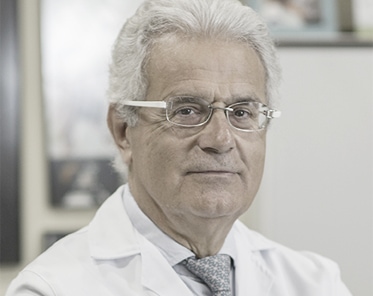
The main interest of this tool (but not the only one) in public health is to allow primary care doctors, and especially emergency physicians, to categorize knee sprains urgently, thanks to a simple-to-use tool in just a few minutes. This classification from the first consultation into a severe sprain (with ACL rupture) or mild (without ACL rupture) allows, on one hand, to avoid unnecessary and costly additional examinations (MRI) in the case of mild sprains, and on the other hand, to immediately adapt treatment to the severity of the sprain, avoiding, for example, unnecessary prolonged immobilizations.

I the undersigned, Doctor Henri ROBERT, Knee ACL surgeon specialist, confirm that the GNRB, ROTAM & DYNEELAX arthrometers are very accurate, reliable and with the best reproducibility in the world.
The arrival of the DYNEELAX revolutionizes the possibilities of the practitioner to regularly analyse the rotational and translational stabilities of the cruciate ligaments in the knee, using a non-invasive test, before and after surgery or as a preventive measure, or after partial tears. Numerous additional applications include notably the analysis of meniscus lesions (medial or lateral) which can be highlighted thanks to the rotational tests, as well as the functional analysis of the strength of the injured tissues.
The rotational analysis is an essential breakthrough as it allows the identification of rotational instabilities which are very difficult to detect with known clinical physical tests (pivot shift test, the Dejour test, dial test...). The DYNEELAX is the result of more than fifteen years of research and development which has led to the most advanced device in this field of study on an international level.
It is essential for surgeons to know the results of rotatory tests in order to adapt ACL surgery and perform or not an extra-articular tenodesis.
As much as translational stability could be controlled manually or with small manual laximetry tools, rotation has no suitable tool to validate this (nor any reliable clinical test due to the absence of relaxation necessary to carry out these tests properly).

This is a letter detailing my/our experience with use of the Genourob Dyneelax laximeter device.
We are a high volume tertiary referral arthroplasty centre and sports medicine centre in Western Australia. We are closely associated with the Orthopaedic Research Foundation of Western Australia.
We have had an excellent experience with the use of our Dyneelax device for multiple research projects, including novel investigation of the sagittal stability of total knee replacements and revision total knee replacements. We also have numerous projects working towards examining the stability of anterior cruciate multi-ligament knee reconstructions.
Our experience working with the company has been excellent. We are literally located on the other side of the world; however, they have gone over and above to help us with training and our customer support. I cannot recommend them highly enough.
In terms of the device, it is an excellent research tool which enables us to establish quantified measurement of the sagittal and rotational stability of multiple different knee arthroplasty devices, a measurement that hereto forth was impossible. This is generating high level novel research of an international interest.

My name is Michael Rüscher, I work in the field of conservative and operative orthopaedics as an osteopath and physiotherapist! I am currently working intensively on my PHD dissertation in the field of biomechanics.
I discovered the device Dyneelax from the company Genourob in the course of my research about 1 year ago and the idea was born to write the dissertation with this laximetry on the knee joint. I have now taken over 100 measurements on operated and conservative cruciate ligaments and am thrilled with the measurement method. It is simple and very reliable to use.
In my daily work with my brother Dr. Rudolf Rüscher we evaluate the cruciate ligaments by means of MRI and immediate laximetry.
We have already had 3 patients with a described complete cruciate ligament rupture who then showed no clear instability in the laximetry measurement, i.e. less than 1.5 mm at 100 Micro Newton. So we are excited about this functional study of this laximetry.
The topic of my dissertation is "Comparative investigation of the biomechanics (laximetry by Genourob) of the knee joint with rupture of the anterior cruciate ligament after surgical and conservative treatment under consideration of economic efficiency".
I would therefore like to thank the Genourob company once again for this innovative examination device!

Your questions answered
Common questions
How do the GNRB and Dyneelax arthrometers improve the accuracy of ACL injury diagnosis?
The GNRB and Dyneelax arthrometers provide objective, quantifiable data on knee laxity, unlike manual tests which can be subjective. The Dyneelax’s ability to apply both translational and rotational forces allows for an even more detailed assessment, making it highly sensitive to partial ACL tears.
Can the GNRB and Dyneelax replace MRI in diagnosing knee injuries?
While these arthrometers offer superior sensitivity in detecting knee laxity and are excellent for diagnosing ACL injuries, they do not replace the comprehensive imaging MRI provides. Instead, they complement MRI by adding functional assessment to the structural information.
Are the GNRB and Dyneelax suitable for use in all patient populations?
Yes, the GNRB and Dyneelax are designed for a wide range of patient populations, from professional athletes to active individuals. However, specific contraindications related to certain medical conditions should be considered, and it’s best to consult with a healthcare professional for individual cases.
What training is required to operate the GNRB and Dyneelax arthrometers effectively?
Proper training is essential for the accurate operation of these devices. This typically involves a combination of theoretical knowledge and practical experience, often provided by the manufacturers or through certified training programs.
How do the GNRB and Dyneelax fit into pre-participation physical evaluations for athletes?
They are used to establish a baseline of an athlete’s knee laxity, which can be invaluable for comparison after an injury. This baseline data assists in accurately determining the impact of an injury and in making informed decisions regarding treatment and return-to-play timelines.
Resources
To assist healthcare professionals in leveraging the GNRB & DyneeLax arthrometers to their fullest potential, we have curated a collection of resources. These are designed to provide comprehensive insights, from basic setup and operation to in-depth diagnostic procedures. These resources aim to facilitate seamless integration of these innovative tools into your diagnostic practice, ensuring accurate and timely identification of knee ligament injuries.
Research Articles & Clinical Studies:
2023 - GNRB® laximeter with magnetic resonance imaging in clinical practice for complete and partial anterior cruciate ligament tears detection: A prospective diagnostic study with arthroscopic validation on 214 patients.
DOI: 10.1016/j.knee.2023.03.017
2023 - Sensitivity, repeatability and reproducibility study with a leg prototype of a recently developed knee arthrometer: The DYNEELAX®
DOI: 10.1016/j.medntd.2023.100254
2019 - Anterior knee translation measurements after ACL reconstruction are influenced by the type of laximeter used.
DOI: 10.1007/s00167-020-05950-5
Instructional & Presentation Videos:
Click Here to view GNRB Tutorial Video
Click Here to view the DyneeLax Presentation Video
We are here to help!
We're here to assist you on your journey towards better health and precision in diagnosis. Don't hesitate to reach out with any questions or inquiries. Contact us today and let us guide you towards a healthier tomorrow.
Visit us
Bâtiment 60, Rue du Chef de Bataillon Henri Géret
53000 Laval
France
Email Us
yves.crystal@genourob.com
Call Us
+33 7 66 76 03 92 Whatsapp or Phone Call
